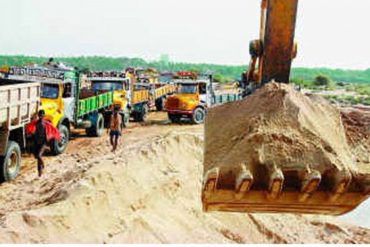The States in India receive central fiscal transfers through the mechanisms of Finance Commission, Planning Commission and the Central Ministries. The transfers through the Finance Commission are statutory, being a part of the design in the Constitution of India. The transfers of central assistance for plan financing of the States from the Planning Commission are a part of the democratic decentralisation adopted through an executive order. The transfers from the Planning Commission also provide reasonable space for ventilating the political aspirations of the governments in the States. The transfers from the Central Ministries are by way of the central sector programmes and the centrally sponsored schemes are such transfers are generally menu driven, leaving little scope for discretion.
One often reads statements issued by various interest groups about the central government favouring a particular State government or ignoring the interests of the State. As it is, such statements are laced with praising the outfit at the central level or criticising it if the State government happens to belong to a different political ideology. The general public, at large, cannot appreciate the nuances of such statements.
The design of the transfer of central assistance for plan financing needs to be understood. The methodology of determining the level of central support for plan financing is different for the special category States as compared to the other States which are not on the special category list. For the non-special category States, the central assistance allocation is based on an objective formula popularly known as Gadgil Formula. More or less on the analogy of the revenue deficit grants for meeting the unmet quantum of non-plan revenue expenditure post-tax devolution by the Finance Commission, the central assistance for plan financing to the special category States is a lumpsum allocation as a part of the Gadgil dispensation to meet the gap between the assessed developmental needs of these States and their own resources inclusive of the net borrowings authorised by the central Government. Also, the central assistance to the special category States is given on a 10 per cent loan and 90 per cent grant basis to these States, whereas the dispensation is 30 per cent grant and 70 per cent loan basis for the other States. These two elements impart a reasonable progressivity to the transfer system in furthering the equity in the federal fiscal design of India. Thus, the level of central support for any special category State for any annual plan period is more a function of the assessed developmental needs and the available resources than anything else. A small element of historicity also gets attached to it for the purposes of comparison by various interest groups. To illustrate this point, it would be useful to look at the data presented in the following table which spans the tenures of different political governments in Himachal Pradesh:
Rs. (Crore)
| Sr. No. | Plan period | Central Assistance* | Plan size* | Col. 3 as % of Col.2 |
| 1 | 2 | 3 | 4 | 5 |
| 1. | 1992-93 | 350.93 | 486.00 | 72.15 |
| 2. | 1993-94 | 405.83 | 560.00 | 72.47 |
| 3. | 1994-95 | 360.42 | 650.00 | 55.45 |
| 4. | 1995-96 | 450.85 | 750.00 | 60.11 |
| 5. | 1996-97 | 527.70 | 900.50 | 58.60 |
| 6. | 1997-98 | 640.30 | 1008.00 | 63.52 |
| 7. | 1998-99 | 915.41 | 1440.00 | 63.57 |
| 8. | 1999-2000 | 809.71 | 1600.00 | 50.60 |
| 9. | 2000-01 | 810.89 | 1382.00 | 58.67 |
| 10. | 2001-02 | 1251.08 | 1720.00 | 72.73 |
| 11. | 2002-03 | 1191.52 | 1840.00 | 64.76 |
| 12. | 2003-04 | 1445.32 | 1335.00 | 108.26 |
| 13. | 2004-05 | 1485.59 | 1400.38 | 106.08 |
| 14. | 2005-06 | 1400.89 | 1600.00 | 87.56 |
| 15. | 2006-07 | 1517.92 | 1800.00 | 84.33 |
| 16. | 2007-08 | 1546.72 | 2100.00 | 73.65 |
| 17. | 2008-09 | 1739.25 | 2400.00 | 72.47 |
| 18. | 2009-10 | 2132.29 | 2700.00 | 78.97 |
| 19. | 2010-11 | 3000.00 |
Note : * The data relates to the originally approved plan size for the individual years and the central assistance committed to finance the originally approved annual plan size.
The above data presents an interesting picture. The level of central support was at its lowest in terms of percentage to the approved plan size for the year 1999-2000 at 50.60 per cent whereas it was at the highest level of 108.26 per cent for the year 2003-04. It stayed at a comparatively low level for the period 1994-95 to 2002-03 with the exception of the year 2001-02 for which it could be categorised at a moderate level. For the years 2003-04 to 2006-07, the central support came in good measure for the understanding of common man. However, it needs to be understood that the State’s own resources during these years were under stress and thus it needed a larger central support even for moderately sized developmental plans. The year 2003-04 had a notional dip in the plan size due to the fact that nearly 45 per cent of the plan expenditure during 2002-03 stood committed to the non-plan for the year 2003-04. Therefore, the reality of developmental plan financing is much different from the politics of it.
Devinder Kumar Sharma, a former Principal Adviser and Secretary Planning, Government of Himachal Pradesh, is a visiting professor and an economist. He lives in Shimla.


